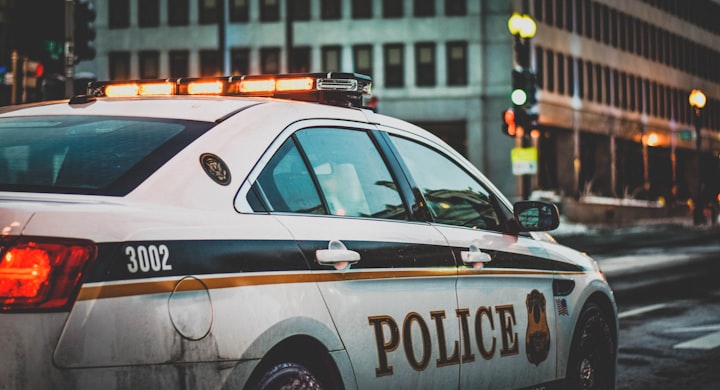Motivation Theories
Motivational Theory within the Climate of Anti-police Sentiment (Graduate Student Study)

With motivation at an all-time low, it is essential to find a theory that helps boost morale in police departments around the United States. One of the theories that would be beneficial for a police department would be Maslow’s Hierarchy of Needs theory. This theory focuses on a pyramid of needs. This theory focuses on physiological needs first which include excretion, breathing, water, food, sleep, homeostasis, and sex (NorthCentral University, 2023.) Once these needs are achieved, they go up the pyramid to security and safety needs (NorthCentral University, 2023). This would include the safety and security needs of the officer’s family, their health, and morality (NorthCentral University, 2023.)
On the next level, they would focus on feeling loved and that they belong (NorthCentral University, 2023.) The fourth level focuses on self-esteem, this could be having confidence, respect from others (the community they serve for example), and achievements (NorthCentral University, 2023.) The final level of Maslow’s Hierarchy of Needs is self-actualization (NorthCentral University, 2023.) On this level, they focus on a lack of prejudice, morality, and problem-solving (NorthCentral University, 2023.) Maslow created a hierarchical theory of wants for people that must be gradually satisfied for them to feel fulfilled. As they manage staff, police supervisors should consider these requirements.
Police managers can aid in the building of a sense of belonging in their officers by ensuring that they have access to psychiatric treatments, providing peer group gatherings, preventing the
formation of officer cliques, and integrating family members in training. For management to maintain their ego status, officers must be given a chance to prove their ability and gain social and professional benefits. By becoming self-driven and setting goals for their own professional development, each officer is responsible for reaching their own potential. A manager can promote self-actualization by offering staff members the chance to make the most of their talents and accomplish their goals (Chandler, 1989.) Maslow’s theory gives us a clear understanding that we need to focus on the well-being of the environment that our officers serve.
Unfortunately, meeting all the needs of Maslow’s hierarchy is difficult because the pay levels for an officer are far lower than they deal with daily based on the low budgets given to these agencies. These lower budgets also constrain the ability of training which leads to officers being underpaid and undertrained (NorthCentral University, 2023.) To remedy this and boost motivation within the departments using the reinforcement theory alongside Maslow’s hierarchy will help fill in the gaps that Maslow’s cannot. B.F. Skinner believed that there are four categories of reinforcement. These include negative punishment, positive punishment, negative reinforcement, and positive reinforcement. The manager must find out if the behavior needs to continue or needs to be stopped (LumenLearning, 2023.)
The local police department here in Bluefield, West Virginia uses both these theories in their day-to-day work. Maslow’s hierarchy of needs focuses on a sense of belonging not just at home and in the office but also within the community. They work closely with Community
Connections, Inc. so that they keep the bond between officers and the community intact. They host several events that make it so that the local youth have a positive impact on each other (Bluefield, WV Police Department, 2023.) Another way to motivate these officers or potential officers is to add in the reinforcement theory to deter officers of behaviors like the incident former Bluefield Police Officer James Mullins engaged in around June 8th, 2022.
Without previous negative reinforcements, before the incident, the former officer was caught screaming at a local restaurant owner. This prompted the public to record him on their cell phones and catch him not only yelling at the man but the former officer assaulting the man regardless of other officers arriving on the scene and attempting to restrain him. Upon searching the former officer’s personal vehicle, the other officers found an open container of alcohol and a pistol sitting on his seat, however he was off duty. The negative reinforcement that the other officers witnessed was that the former officer was fired and charged with Domestic Battery against the restaurant owner (Kittle, 2022). This incident opened the possibility to introduce the reinforcement theory. Typically, the Bluefield Police Department posts about their triumphs on social media or in the newspaper to reinforce the behaviors of those officers involved. However, I feel that the only reinforcement they are receiving is not enough.
While police departments do not have a high budget, there could be other incentives they are eligible for. Some departments have officers give out gift cards to citizens for following the law so this department could set aside some funds to award their officers. An idea would be to create an
anonymous box where fellow officers or the community can put a piece of paper explaining the good behaviors they have seen or the potentially bad behaviors. Every month the officers with the best behaviors would receive some type of reward. This would motivate these officers to do as many honorable deeds as possible to be recognized. While this will not fix the whole police department this will help encourage officers to change their behaviors for the better (Rachlin, 2021.)
Ideas for positive reinforcement incentives to boost morale could include going home early if there is not a lot to do during their shift, added paid time off days, a gift card or even a small pay raise. Continuing to use public domains like Facebook or LinkedIn to highlight their accomplishments will continue as this seems to have a positive impact on the officers and the community however utilizing Moslow’s hierarchy needs to be accompanied with the reinforcement theory so that where each one is not filling in the gaps the other can as they build on each other. For example, sharing their accomplishments is positive reinforcement, however this also focuses on Moslow’s hierarchy on several levels such as their morality, sense of belonging as well as their confidence and achievements (NorthCentral University, 2023.)
Negative reinforcements may include losing pay raises, not being considered for early leave during shifts, and in extreme situations termination. Neutral reinforcements would be a meeting with upper management to explain why the officer is behaving this way and the best way to prevent these issues in the future. The positive reinforcements include things the individuals want
to gain to reinforce good behaviors and deter negative behaviors. Using both the theories helps make sure that the officer’s needs are being met while reinforcing positive behaviors that benefit the department, the officer, and the community to ensure that the officer does not feel like the public is beneath him or that he/she is beneath the public. A healthy balance benefits the community and the officers serving the community.
About the Creator
Ella Dorman
I am a homeschooling mother of 5 by day and a college student and writer by night.






Comments
There are no comments for this story
Be the first to respond and start the conversation.